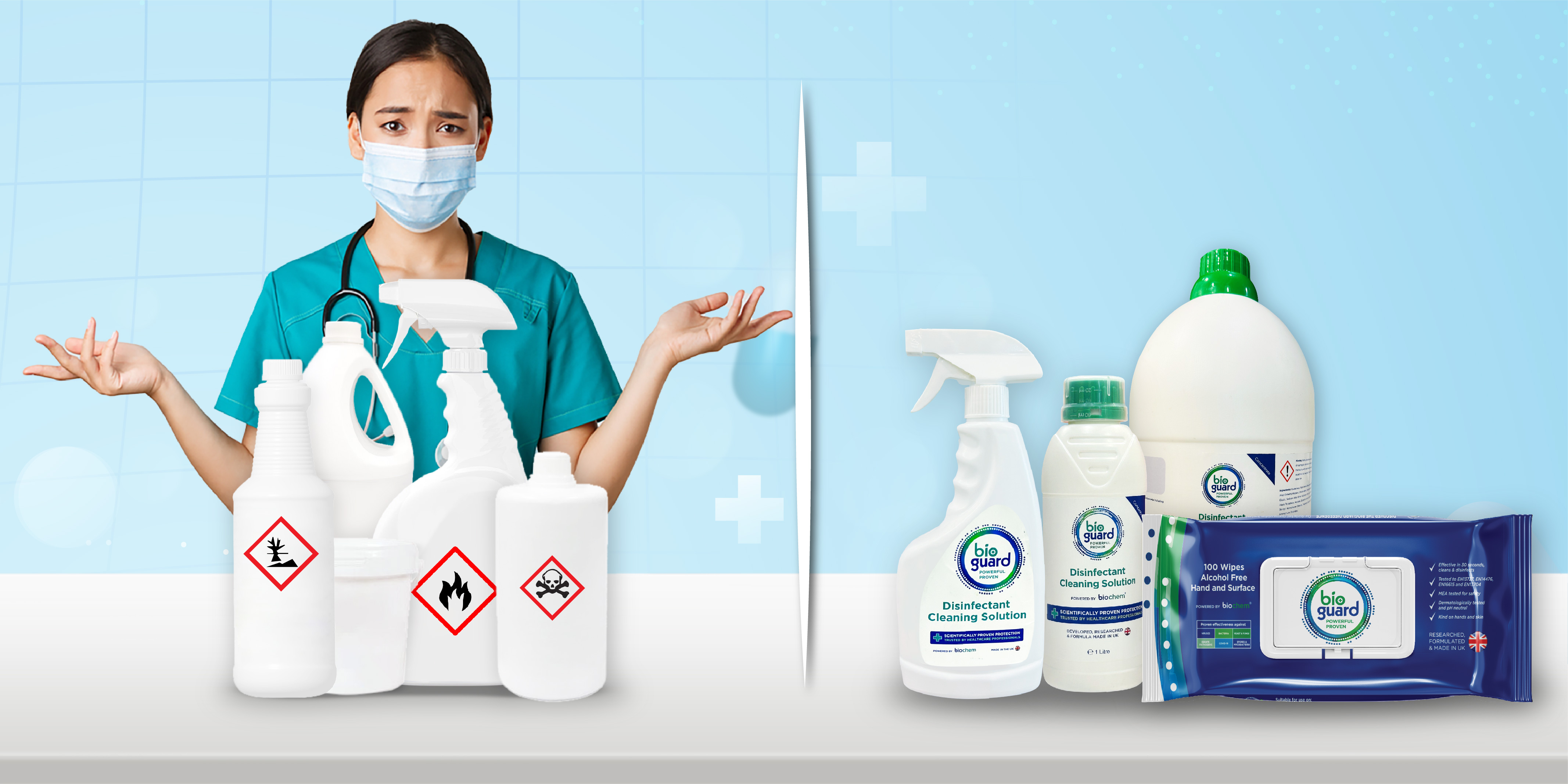
Optimizing Disinfection: Aligning with NABH and JCI Standards through product streamlining
In the healthcare domain, ensuring the quality of patient safety is paramount. Patient safety apparently involves disinfecting the hospital premises. However, maintaining these standards involves a structured process of medical audits.
Two pivotal entities in this endeavor are the National Accreditation Board for Hospitals (NABH) and Joint Commission International (JCI), esteemed bodies dedicated to upholding comprehensive standards.
More than 1300 [1] Indian healthcare facilities are accredited under NABH, while over 50 entities boast international accreditation from JCI. Medical audits conducted by both of these organizations involve disinfection assessment in the healthcare sector. [2]
A majority of hospitals use various cleaning and disinfecting products, each with its own set of rules and precautions. Managing all these directives during an audit can be as challenging as finding your way through a maze. Errors namely incorrect product usage or oversight of safety protocols can influence the outcome of the audit result. Let us explore the challenges hospitals encounter during audits and strategies to overcome difficulties successfully.
The chaos of multiple brands:
Medical audit involves examining professional practices by healthcare providers against established standards. In hospitals, data collected through professional accounting systems is used to verify adherence to these standards.
Think of this scenario: a microbiologist from a reputable hospital starts on a NABH audit journey. Despite their expertise, they find themselves grappling with a plethora of brands, each with its own dilutions, efficacy claims, and safety precautions. This scenario is not uncommon. Training end-users becomes a difficult task as confusion reigns supreme. One misstep in product usage or safety protocol could result in non-compliance (NCs) during audits, tarnishing the hospital's reputation.
Consider these statistics from the hand hygiene compliance survey during the period of May 2009 to May 2010, a total of 163 healthcare professionals. Among them, 57 were doctors, 92 were nurses, and 14 were patient care technicians. The overall compliance rate was determined to be 50.3%, with compliance rates among doctors, nurses, and technicians being 49.1%, 52.2%, and 42.8%, respectively.[3]
The non-compliance rate is approximately 50%. Such problems may arise due to the use of multiple products, potentially contributing to non-compliance of healthcare sectors during medical audits.
Non-compliance incurs direct costs to the healthcare facility such as consultation and visiting charges for auditors, product costs, and indirect costs in retraining staff, documentation, and SOP updates. These costs can run to 1 lakh plus for each noncompliance in addition to the reputational damage to the institution.
Solution: Consolidating to a single brand approach
To mitigate the chaos caused by multiple brands, hospitals can consider consolidating their cleaning and disinfecting products into a single trusted brand. By standardizing products across departments, hospitals simplify training, reduce the risk of errors, and enhance compliance with audit standards. Moreover, a single-brand approach builds consistency in product efficacy and safety, instilling confidence in end-users and audit inspectors alike.
Assisting hospitals in compliance:
Another instance is a hospital undergoing a JCI audit that received non-conformities related to Safety Data Sheets (SDS) of disinfectants. The hospital lacked SDS compliant with the Global Harmonized System (GHS). However, with the right assistance, they were able to rectify the issue promptly, demonstrating the value of expert guidance in easing the audit complexities.
Hospitals must recognize the challenges posed by multiple brands of cleaning and disinfecting products and take proactive steps to streamline their approach. Consolidating to a single brand not only alleviates the burden on end-users but also enhances compliance with stringent standards set forth by accreditation bodies like NABH and JCI. As hospitals strive to prioritize patient safety and quality of care, embracing a unified approach to product management emerges as a vital strategy in navigating the labyrinth of audits with confidence and efficiency.
Our comprehensive disinfectant solutions offer a versatile approach to cleaning. Effective on a variety of surfaces and suitable for diverse situations, they ensure a clean and disinfected environment. This becomes the solution to remove the chaos.
Check the characteristics of Bioguard Disinfectant Solutions:
-
Latest formulation Biochem: Powered with the latest generation QACs, Bioguard disinfectants are both virucidal and sporicidal effective.
-
Manufacturing excellence: Formulated to produce the highest quality products, Bioguard is trusted by healthcare professionals and regularly used in more than 25,000 healthcare settings.
-
Proven efficiency: Independently tested to the EN gold standards (EN13624, EN13727, EN14476, EN17126, EN14348, EN16615, and EN1500) and tested in dirty conditions to reflect real-time use.
-
Powerful & Efficient: Combined cleaning and disinfection capability, effective in eliminating residual bioburden in high-soiling environments.
-
Dual Action: A unique compound for high-performance cleaning & disinfection; effective against bacteria including ESKAPE, Mycobacterium [T.B.], and spores such as C.Diff effective against Viruses such as Hepatitis and HIV.
-
Multi-surface: Applicable on virtually all surfaces (including fabrics and furnishings), so they can decontaminate an entire environment without damaging surfaces.
-
Safe & Eco-friendly: MEA and VOC tested to ensure that they are safe and do not cause any harm to the users. Bioguard disinfectants are also eco-friendly and non-damaging to the environment.
-
Greater dilutions & Cost-effective: 2 in 1 disinfection action of our products eliminates the need for multiple products, making them cost-effective.
Furthermore, our disinfectants allow up to 40% more dilutions per liter, adding to the cost-effectiveness, SAVING YOU TIME & MONEY
Bioguard combined with the power of Biochem and enhanced packaging with HDPE, offers a powerful and effective solution to infection control that is easy to apply.
Bioguard - we maintain the contact time of 30 seconds to ensure the best disinfection.


